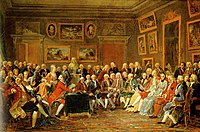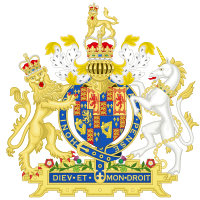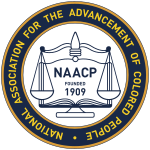-
Use Cases
-
Resources
-
Pricing
Historical Background
Kett's Rebellion
1549
% complete
Leaders of Kett's Rebellion in 1549 argued for the freedom of all bond men, stating that all individuals are made free by God's bloodshed. This early expression of the concept of civil rights laid the foundation for future struggles against oppression and discrimination.
Image source: Kett's Rebellion

Enlightenment and Codification of Rights
1600 - 1799
% complete
The Enlightenment, spanning the 17th and 18th centuries, played a significant role in shaping political theories associated with civil rights. Ideas of individual rights, liberty, and equality were codified in legal documents such as the English Bill of Rights, the French Declaration of the Rights of Man and of the Citizen, and the United States Bill of Rights.
Image source: Age of Enlightenment

English Bill of Rights
1689
% complete
The English Bill of Rights, adopted by the Parliament of England in 1689, established certain civil rights and liberties for English citizens. It influenced subsequent declarations of rights, including the United States Bill of Rights, and played a significant role in shaping the concept of civil rights.
Image source: Bill of Rights 1689

Virginia Declaration of Rights
1776
% complete
The Virginia Declaration of Rights, drafted by George Mason and James Madison in 1776, drew inspiration from the English Bill of Rights. It proclaimed the inherent rights of Virginians, including the right to freedom of speech, religion, and assembly. This influential document laid the groundwork for the protection of civil rights in the United States.
Removal of Civil Rights
1789
% complete
The removal of a civil right through legislation is considered a civil disability. This recognition emphasizes the importance of safeguarding civil rights and the potential consequences of their removal.
Image source: Civil and political rights

Roman Catholic Relief Act 1829
1829
% complete
The Roman Catholic Relief Act 1829 was passed by the Parliament of the United Kingdom and restored civil rights to Catholics. This act marked an important milestone in the fight against religious discrimination and contributed to the broader advancement of civil rights in Britain.
Image source: Roman Catholic Relief Act 1829

Universal Declaration of Human Rights
1948
% complete
The Universal Declaration of Human Rights was adopted by the United Nations General Assembly on December 10, 1948. It established a set of fundamental human rights and freedoms that apply to all individuals, regardless of their race, color, religion, sex, or national or social origin. The declaration has served as a cornerstone for the advancement of civil rights globally.
Image source: Universal Declaration of Human Rights

Civil Rights Movements
Declaration of Rights and Sentiments
1848
% complete
The Declaration of Rights and Sentiments, adopted at the Seneca Falls Convention in 1848, was a foundational document of the American women's movement. Modeled after the Declaration of Independence, it demanded equal rights for women, including the right to vote. This declaration sparked the ongoing struggle for gender equality and women's civil rights.
Image source: Declaration of Sentiments

Political Movements for Equality
1950 - 1980
% complete
Between approximately 1950 and 1980, political movements for equality before the law emerged worldwide. These movements aimed to challenge discrimination and secure civil rights for marginalized groups, including racial and ethnic minorities, women, and LGBTQ+ individuals.
Image source: Political movement

Civil Rights Movement in the United States
1954 - 1968
% complete
The civil rights movement in the United States was a social and political struggle against racial discrimination and segregation. It spanned from 1954 to 1968 and was characterized by nonviolent protests, civil disobedience, and legal battles. The movement aimed to secure equal rights and opportunities for African Americans, challenging systemic racism and leading to significant legislative and societal changes.
Image source: Civil rights movement

Organizations
National Rifle Association (NRA)
1871
% complete
The National Rifle Association (NRA), founded in 1871, is a civil rights group primarily focused on protecting the right to bear arms in the United States. It advocates for the preservation of the Second Amendment and defends individuals' rights to own and carry firearms.
Image source: National Rifle Association

National Association for the Advancement of Colored People (NAACP)
1909
% complete
The National Association for the Advancement of Colored People (NAACP), founded in 1909, focuses on protecting the civil rights of racial and ethnic minorities in the United States. It has been instrumental in challenging racial discrimination, promoting equal rights, and advocating for social justice.
Image source: NAACP

American Civil Liberties Union (ACLU)
1920
% complete
The American Civil Liberties Union (ACLU), founded in 1920, is a well-known non-profit organization dedicated to preserving individual liberties and civil rights in the United States. It works to defend freedom of speech, protect civil rights in the legal system, and advocate for policy changes that uphold civil liberties.
Image source: American Civil Liberties Union

International Recognition
European Convention on Human Rights
1953
% complete
The European Convention on Human Rights, established in 1953, enshrined civil rights and fundamental freedoms for individuals in Europe. It provides a legal framework for the protection of civil rights and has been influential in shaping human rights standards in the region.
Image source: European Convention on Human Rights

Key Facts
- The Supreme Court ruling in Brown v. Board of Education desegregates public schools.
- Rosa Parks refuses to give up her bus seat to a white passenger, sparking the Montgomery Bus Boycott.
- The Civil Rights Act of 1964 is signed into law, prohibiting segregation in public places.
- The Voting Rights Act of 1965 is passed, protecting the right to vote for African Americans.
- Martin Luther King Jr. delivers his famous 'I Have a Dream' speech during the March on Washington.
Source
This Civil Rights timeline was generated with the help of AI using information found on the internet.
We strive to make these timelines as accurate as possible, but occasionally inaccurates slip in. If you notice anything amiss, let us know at [email protected] and we'll correct it for future visitors.
Create a timeline like this one for free
Preceden lets you create stunning timelines using AI or manually.
Customize your timeline with one of our low-cost paid plans
Export your timeline, add your own events, edit or remove AI-generated events, and much more
Free
$
0
free forever
No credit card required.
Basic
$
10
/month
billed annually
Cancel anytime.
Pro
$
16
/month
billed annually
Cancel anytime.
Common Questions
Can I cancel anytime?
Yes. You can cancel your subscription from your account page at anytime which will ensure you are not charged again. If you cancel you can still access your subscription for the full time period you paid for.
Will you send an annual renewal reminder?
Yes, we will email you a reminder prior to the annual renewal and will also email you a receipt.
Do you offer refunds?
Yes. You can email us within 15 days of any payment and we will issue you a full refund.
What if I have more questions?
Check out our pricing docs or send us an email anytime: [email protected].